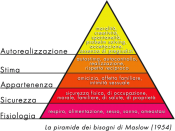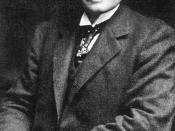The second blueprint of management theory started the famous Hawthorne & Mayo experiment in American electronic factory (1924-1932) until 1970s when the systems model became very popular (Inkson & Kolb, 1998). The fourth blueprint theory that systems model was characterised by six main assumptions emergence in 1980s, developed Classical management theory which includes scientific management, bureaucracy theory, and administrative management.
The Similarities
These two blue prints both developed the importance of the role of human in organization on the basis of F. W. Taylor' scientific management thought. Their focus shifted from the formal organization to the informal work group and emphasized the research of relationship between workers, workers and leaders. They pointed out that social environmental conditions had become the most important factor to workers, not only working circumstance. If it can be said that Taylor believed managers were chosen only for their intellectual ability and rationality, so they added more new human objectives as necessary needs for an organizational leader, for example, Abraham Maslow conducted the famous theory of five primary requirements in 1943 (Zhou, 2003).
The Differences
First, the differences are in organisational forms. The fourth blueprint was driven by the rapid nature of change like globalization. But the second one still researched the situation as an inter-locking matrix because "classical ideas depend for their efficacy on a certain level of stability in organizations and their environments" (Inkson & Kolb, 1998, p74). The fourth one had jumped from Human side to the collaborative organization with the development of modernisation.
Second, their managerial principles are different. The second blueprint believed there is just a kind of supportive relationship existing in organization. So their focus was human behaviour within organization. The fourth blueprint seemed an organization as a collaborative social system in which all reflection of society could be...


